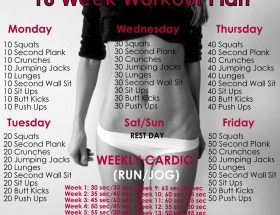Resistance bands have gained popularity in recent years as a convenient and effective tool for strength training. Whether you’re a beginner or an advanced fitness enthusiast, incorporating resistance bands into your workouts can provide numerous benefits. Not only are they highly effective in building strength, but they are also extremely portable, making them ideal for at-home workouts or when you’re on the go.
The Benefits of Resistance Bands
1. Versatility
Resistance bands offer a wide range of exercises that target every major muscle group in your body. From upper body workouts like bicep curls and tricep extensions to lower body exercises like squats and lunges, resistance bands provide a versatile option for a full-body workout.
2. Adjustable Resistance
Resistance bands come in various levels of resistance, allowing you to easily adjust the intensity of your workouts. Whether you’re a beginner or a seasoned athlete, you can find a resistance band suitable for your current fitness level and gradually increase the resistance as you get stronger.
3. Joint-Friendly
Unlike traditional weights, resistance bands put less stress on your joints. This makes them an excellent option for individuals who may have joint issues or are recovering from an injury. Resistance bands offer a controlled and smooth movement that minimizes the risk of injury while effectively targeting the muscles.
How to Use Resistance Bands
1. Warm-Up
Before starting any workout, it’s crucial to warm up your muscles to prevent injuries. Incorporate dynamic stretches and movements to prepare your body for the upcoming exercises.
2. Choose the Right Band
Resistance bands come in different strengths, typically color-coded to indicate their level of resistance. Start with a band that provides enough resistance to challenge your muscles without compromising your form.
3. Follow Proper Form
Ensure you maintain proper form throughout each exercise. Focus on engaging the targeted muscles and avoid any jerky or abrupt movements. This will maximize the effectiveness of your workout and reduce the risk of injury.
4. Start with Compound Movements
Begin your strength training session with compound movements that target multiple muscle groups simultaneously. Examples include squats, lunges, push-ups, and rows. Compound exercises efficiently work multiple muscle groups and help you build overall strength.
5. Isolate Specific Muscle Groups
After performing compound movements, you can move on to isolating specific muscle groups. Resistance bands allow you to target muscles like the biceps, triceps, shoulders, back, and legs with focused exercises such as bicep curls, tricep extensions, lateral raises, and hamstring curls.
6. Include Core Exercises
Strengthening your core is essential for overall stability and balance. Incorporate exercises like plank variations, Russian twists, and standing crunches to engage your core muscles.
7. Stretch and Cool Down
Finally, don’t forget to stretch and cool down after your workout. This promotes flexibility, aids in muscle recovery, and reduces post-workout soreness.
Conclusion
Resistance bands offer an effective and portable solution for strength training. With their versatility, adjustable resistance, and joint-friendly nature, they cater to a wide range of fitness levels and goals. When used correctly, resistance bands can help you build strength, increase muscle definition, and achieve overall fitness. So, whether you’re at home or on the go, consider incorporating resistance bands into your workout routine for a challenging and rewarding strength training experience.








